 |
 |
|
 |
 |
 |
 |
 |
| Vision Impacts Sparkle |
|
RAPNET Diamond Trading Network, July 30, 2014
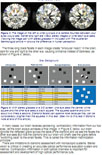
Brilliance is largely an illusion created because each eye sees a diamond from a different direction, creating brain conflict when a facet is dark for one eye and bright for the other.
This breakthrough led the Cut Group to study human vision and many optical illusions in viewing diamonds.
Those findings were published in The Australian Gemmologist in 2013, with a stereoscopic viewer enclosed with the issue. The research has established new definitions of brilliance, scintillation and fire, which are the basis of developing mathematical models for diamond beauty assessment.
The research is testing and modifying these systems against experts' observations in the group's controlled light environment.
Read Vision Impacts Sparkle from The Rapaport Magazine
|
|
|
|
| How diamond performance attributes: Brilliance, Scintillation and Fire depend on human vision features |
|
The Australian Gemmologist, July-September, 2013
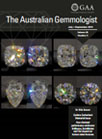
This study describes how visual properties determine the perception of a diamond's appearance and its performance attributes of brilliance, scintillation and fire, and how these influence beauty.
This research enables the development of methods and instruments for diamond performance analyses, shifting from current diamond cut rejection based tools, to diamond performance scoring systems, and the introduction of a new consumer language for communication between diamond buyers and sellers.
The proposed Performance Scoring System is consumer friendly and can be used to design and manufacture new diamond cuts with improved optical appearance.
Read How diamond performance attributes: Brilliance, Scintillation and Fire depend on human vision features from The Australian Gemmologist
|
|
|
|
| Inconsistencies in "The French Blue and the Hope" |
|
Letters Gem & Gemology Summer 2009
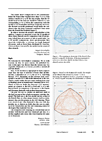 In their article presenting a new model of the French
Blue (Spring G&G, pp. 4-19), Farges et al. used a newly
discovered lead cast to confirm the possibility of the
Hope diamond being cut from the French Blue. During
their research, they created a three-dimensional model of
the cast based on the shadow projections obtained by an
Octonus Helium Rough 1:4 scanner operated by Matrix
Diamond Technology. The dimensions of the model are
30.37 x 25.50 x 12.87 mm, which match those of the lead
cast within 20 microns accuracy. (This model is available
at www.octonus.com/oct/projects/frenchblue.phtml.) In their article presenting a new model of the French
Blue (Spring G&G, pp. 4-19), Farges et al. used a newly
discovered lead cast to confirm the possibility of the
Hope diamond being cut from the French Blue. During
their research, they created a three-dimensional model of
the cast based on the shadow projections obtained by an
Octonus Helium Rough 1:4 scanner operated by Matrix
Diamond Technology. The dimensions of the model are
30.37 x 25.50 x 12.87 mm, which match those of the lead
cast within 20 microns accuracy. (This model is available
at www.octonus.com/oct/projects/frenchblue.phtml.)
From my analysis of the 3D model, I disagree with
some of the statements made in the article...
Read Inconsistencies in "The French Blue and the Hope" from Gem & Gemology |
|
|
|
| Buying Diamonds: Consumers' Problems and a Solution |
|
Diamond Grading May 1, 2009
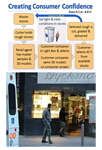 Abstract: Next Diamond™ enables diamonds to be cut and polished in a way that solves problems for diamond cutters, retailers and consumers. Consumers can actually see the shape and quality of the diamond that appeals to them, personally, and the rough diamond will only be cut after being selected as the preferred diamond.
By harnessing modern technology and web based communications we improve efficiency, cut quality and, best of all, allow individual taste to be satisfied. Abstract: Next Diamond™ enables diamonds to be cut and polished in a way that solves problems for diamond cutters, retailers and consumers. Consumers can actually see the shape and quality of the diamond that appeals to them, personally, and the rough diamond will only be cut after being selected as the preferred diamond.
By harnessing modern technology and web based communications we improve efficiency, cut quality and, best of all, allow individual taste to be satisfied.
Read Buying Diamonds: Consumers' Problems and a Solution from Pricescope Diamond Journal |
|
|
|
| Synthetic Appeal |
|
Rapaport Diamond Report October 3, 2008
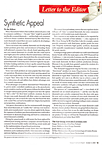 Many diamantaires believe that synthetic diamonds pose a risk to consumer confidence - because "fakes" might be passed off unethically as natural diamonds - and that high-end consumers will never choose a synthetic diamond anyway. But what if man-made diamonds created their own new markets by developing a niche in exclusive luxury goods? Many diamantaires believe that synthetic diamonds pose a risk to consumer confidence - because "fakes" might be passed off unethically as natural diamonds - and that high-end consumers will never choose a synthetic diamond anyway. But what if man-made diamonds created their own new markets by developing a niche in exclusive luxury goods?
Read Letter to the Editor from Rapaport Diamond Report |
|
|
|
| Commoditization of Diamonds |
|
Rapaport Diamond Report December 7, 2007
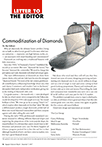 Why are diamonds - the ultimate luxury product - losing out so badly to other luxury goods? Is it because other luxury industries (expensive cars, high fashion, yachts, etc,) are innovative with smart branding and customization? Why are diamonds - the ultimate luxury product - losing out so badly to other luxury goods? Is it because other luxury industries (expensive cars, high fashion, yachts, etc,) are innovative with smart branding and customization?
Diamonds are evolving into a traditional business with little innovation.
Since the 1940's "A Diamond is Forever" established diamonds as necessities. But now "diamond the luxury" has become "diamond the commodity". We need to change this perception and make diamonds individual and unique again ...
Read Letter to the Editor from Rapaport Diamond Report |
|
|
|
| Letter to the Editor of the Australian Gemmologist |
|
Diamond Grading February 24, 2007
GIA's letter to the Editor
Dear editors,
The recent work by Sivovolenko et al. ("Diamond cut grading: Unintended consequences and solutions," First Quarter 2006, pp. 447-454) mentions our work on Cut Quality grading in round-brilliant-cut diamonds (RBCs). We found several inaccuracies in this article related to our research and cut grading system, and therefore felt we should take this opportunity to clarify some points for the record...
The Cut Group Letter to the Editor 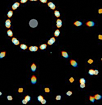 Dear Editor, Dear Editor,
Thank you for giving us the opportunity of responding to the letter of critique sent to the Editor from the GIA Diamond Cut Team concerning our paper in the April-June 2006 issue of The Australian Gemmologist.. This response from our Cut Group* represents a rare opportunity to engage in open dialogue with the GIA Diamond Cut Grading research team, and we also would like thank them for this opportunity...
Read Letter to the Editor of the Australian Gemmologist |
|
|
|
| Fancy-Color Diamonds: Better Color Appearance by Optimizing Cut |
|
Oral Prezentation at IV Gemological Symposium, San Diego, Ca, USA 27-30 Aug 2006
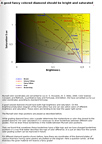 Colored rough diamond challenges: Colored rough diamond challenges:
- How to get better saturation?
- How to get better brightness?
- How to get better color distribution?
- How to get better yield?
- How to get it all?
We present a method for selecting rough diamonds,
and determining the optimal shape and proportions.
More details...
|
|
|
|
|
 |
 |
 |
 |
|
 |
 |




















